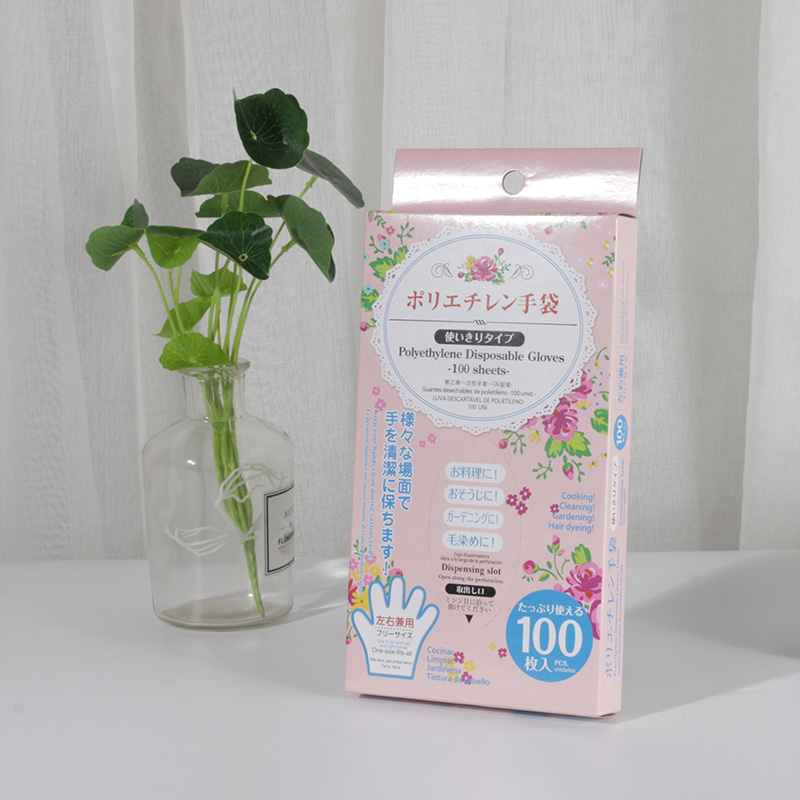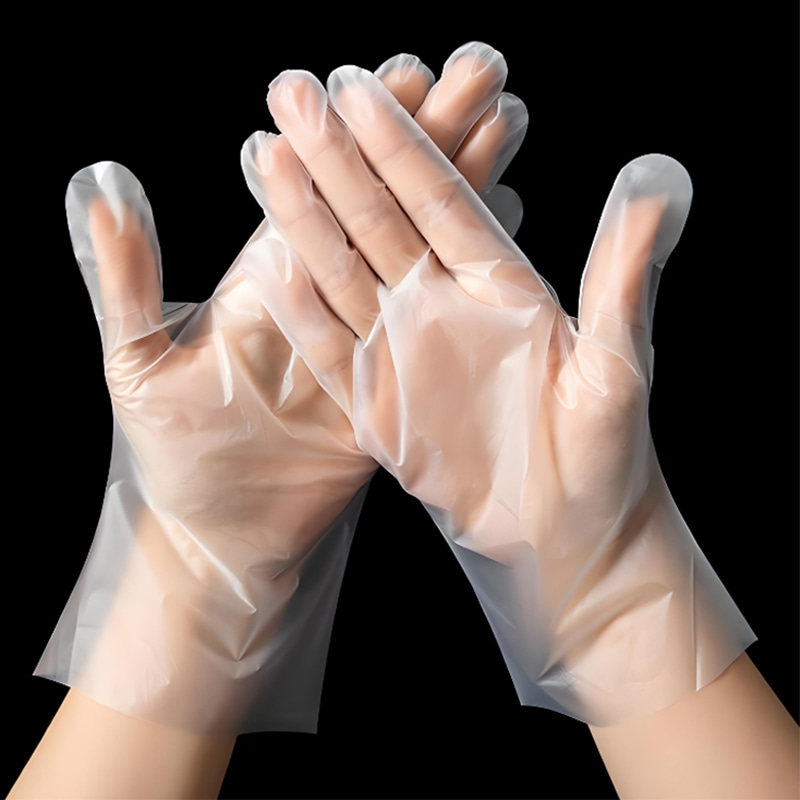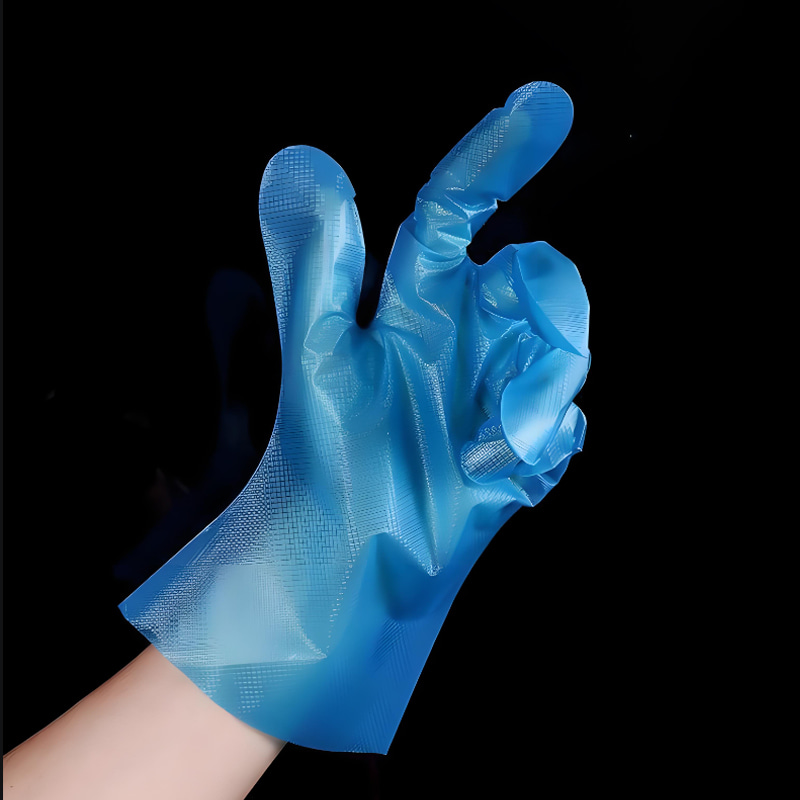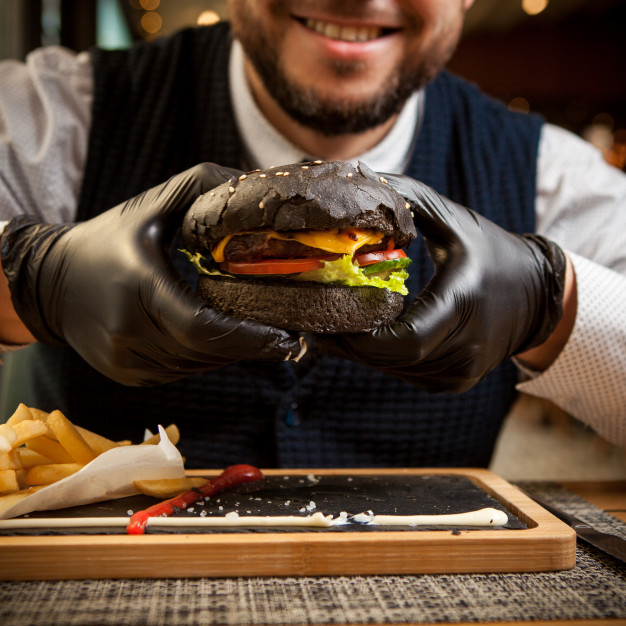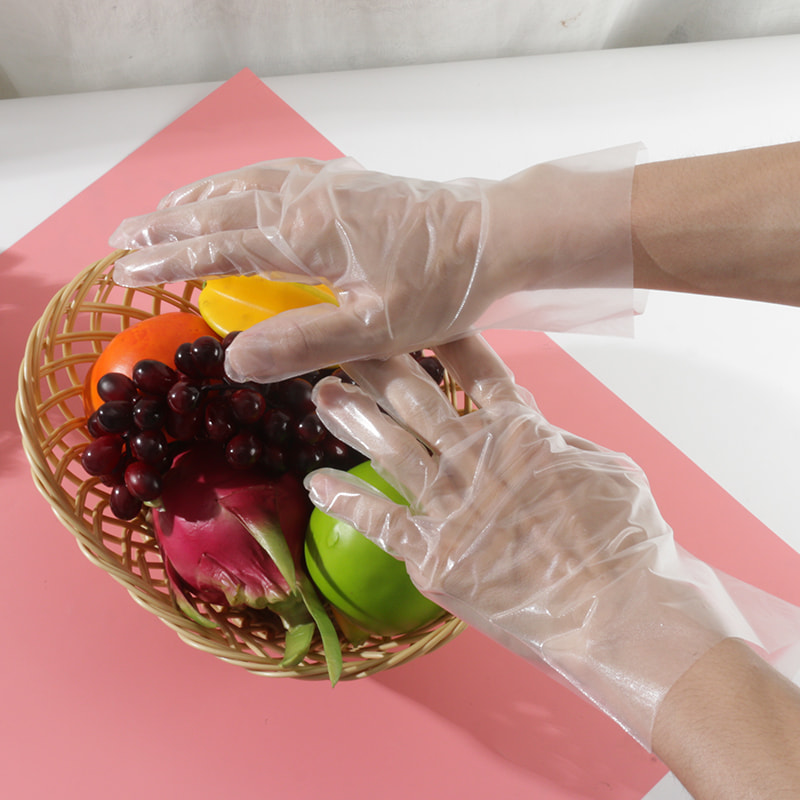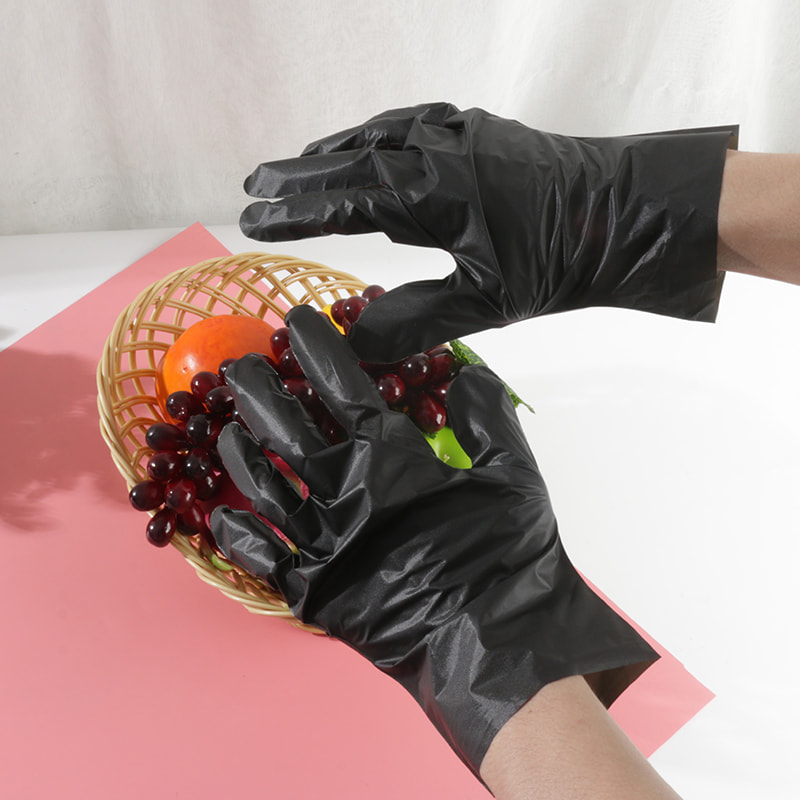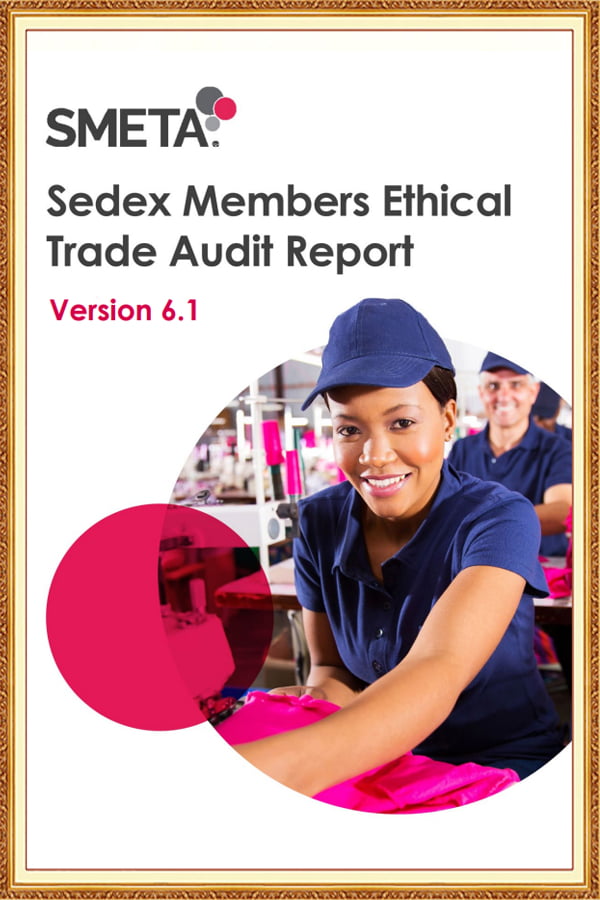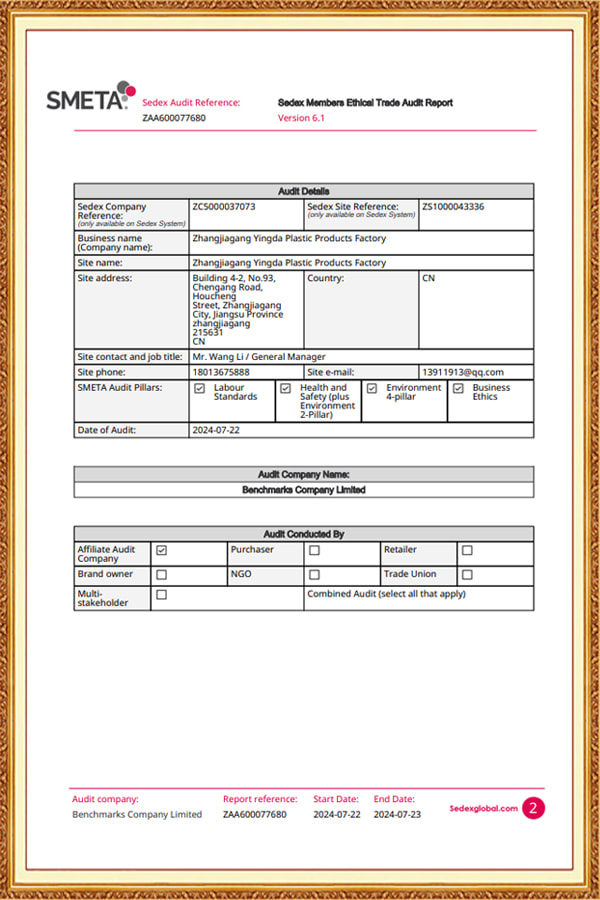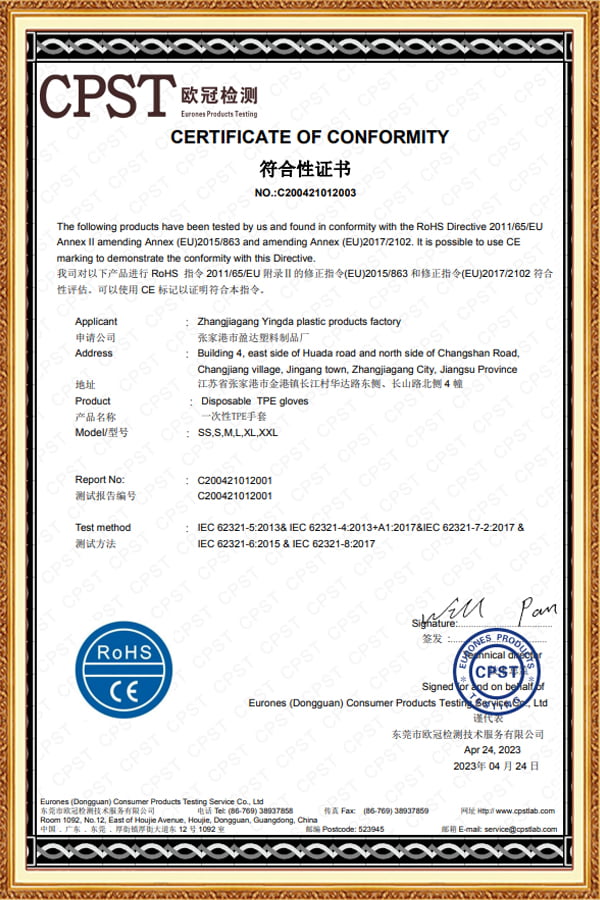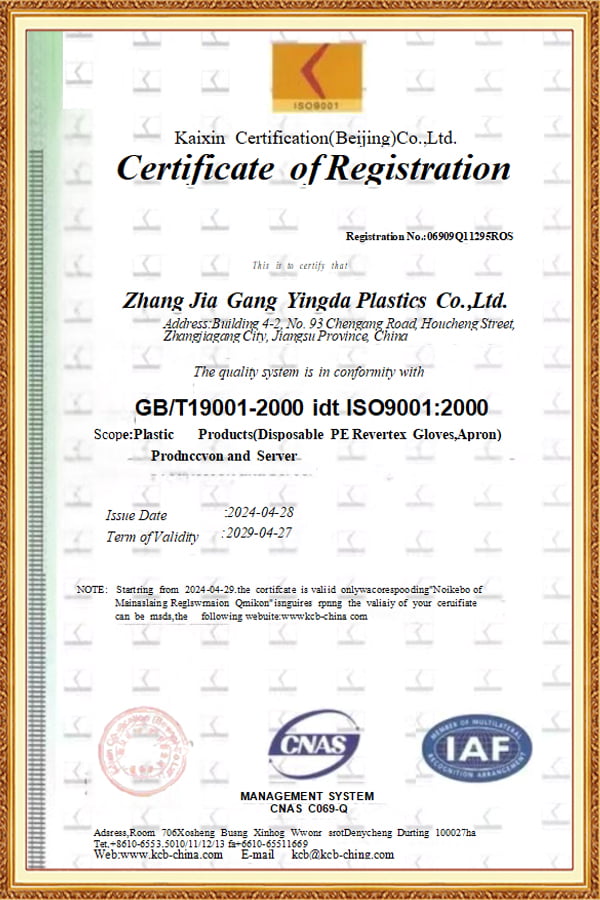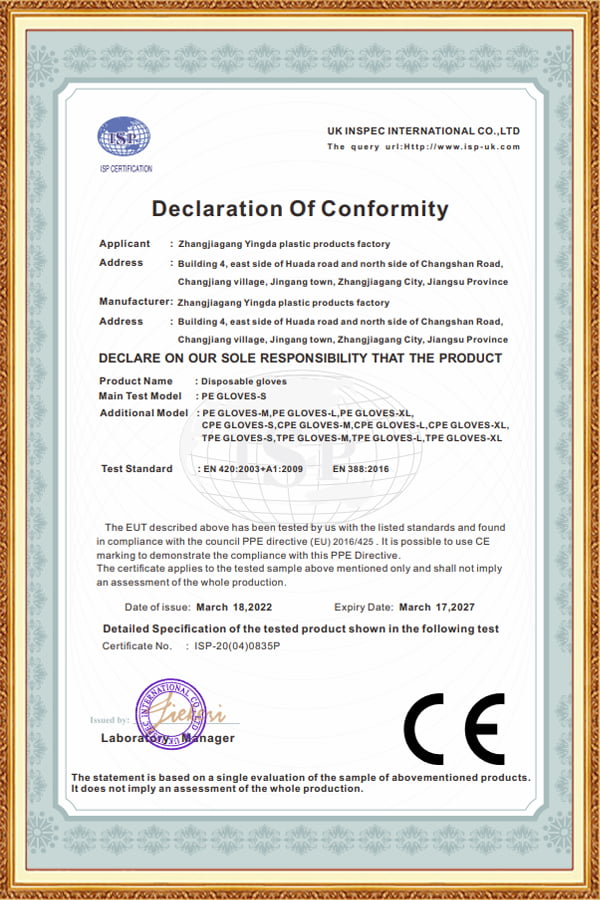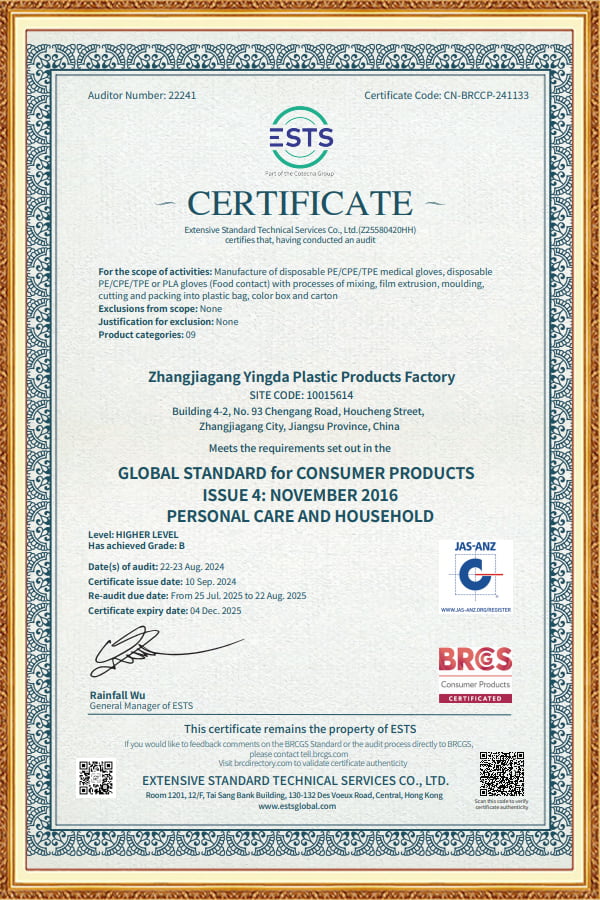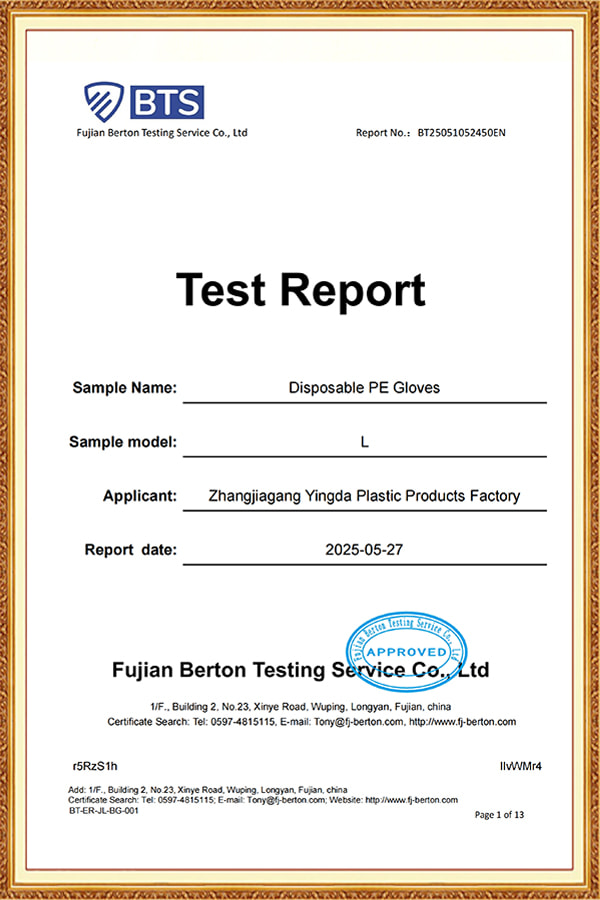S,M,L,XL Environmentally friendly and soft. This white TPE glove (frosted pattern) is a high-perform...
See Details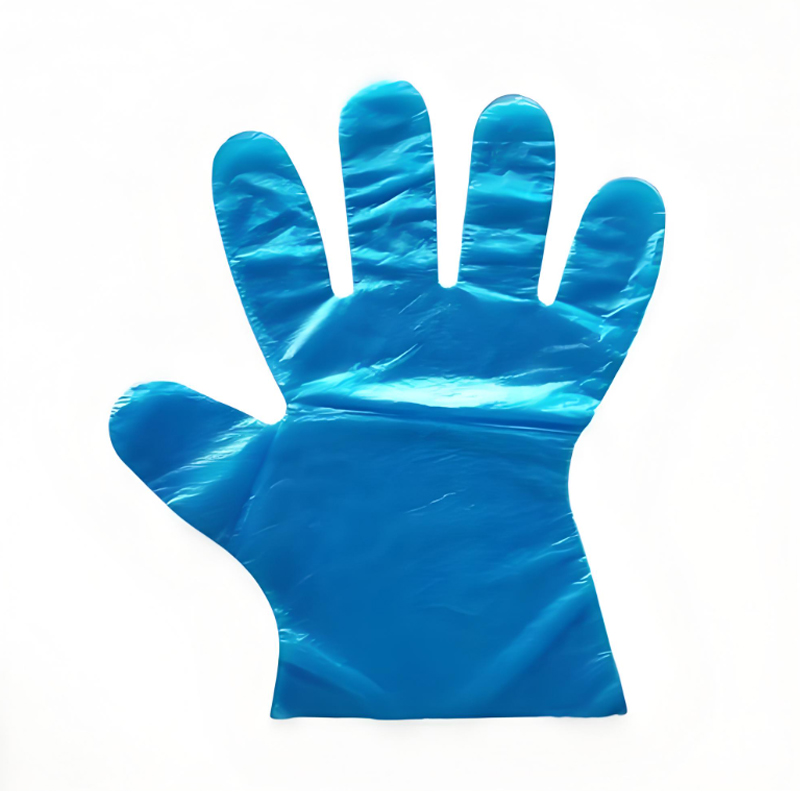
Anti-bacteria, acid and alkali resistant Blue LDPE gloves
Anti-bacteria, acid-resistant and alkali-resistant blue LDPE gloves are disposable gloves made of low-density polyethylene (LDPE) with excellent protective performance and versatility. This type of gloves is not only suitable for scenes with high hygiene requirements such as food processing and medical care, but can also provide effective hand protection in environments such as chemical laboratories, industrial production and household cleaning. Its design focuses on comfort and practicality, and is widely used in situations where it is necessary to prevent bacterial infection and contact with acid and alkali substances.
- Product Features
- Application Scenario
- Production Process
-
Anti-bacterial, acid-resistant and alkali-resistant blue LDPE gloves are suitable for a variety of scenarios, including but not limited to the following fields:
● Food processing and sanitation industry: used for food processing, catering services and kitchen cleaning, can effectively prevent bacterial contamination, while protecting hands from oil and water.
● Medical and nursing: In medical environments, used for surgical assistance, nursing operations and laboratory testing to ensure that the operator's hands are not infected.
● Chemical experiments and industrial production: suitable for experimental operations and industrial production that come into contact with acid and alkali solutions, solvents and other chemical substances. It can withstand a certain concentration of acid and alkali solutions and protect the hands from corrosion.
● Home cleaning and gardening: In scenarios such as home cleaning and gardening, it provides good anti-slip properties and durability, making it convenient for users to complete various cleaning tasks.
-
Product Advantages
● Introduction Material and Performance: Made of new LDPE raw material, it is waterproof, oil-proof, acid-resistant, alkali-resistant, and anti-bacteria. It also has good flexibility and durability and is not easy to break.
● Design and Comfort: The surface of the gloves is precisely embossed to increase friction, making them non-slip and easy to operate. The heat-sealed edge design avoids punctures, making them suitable for both left and right hands, and comfortable and convenient to wear.
● Specifications and Customization: A variety of specifications (such as S, M, L, XL) and thickness options (1.0-3.5 mm) are available, which can be customized according to customer needs to meet the needs of different usage scenarios.
● Environmental Protection and Safety: It does not contain any harmful chemicals, complies with FAD and CE certification standards, is safe and non-toxic, and is suitable for direct contact with food or sensitive skin.
-
Technology and craftsmanship
1. Core production process
Raw material ratio and pretreatment
PE gloves are mainly made of LDPE (low-density polyethylene), HDPE (high-density polyethylene) or LLDPE (linear low-density polyethylene) raw materials, which are mixed with additives (such as plasticizers and anti-sticking agents) to form a homogeneous material. Some processes introduce composite modification technology to improve barrier properties (such as oil resistance and chemical resistance).Film blowing
molding: After the mixed raw materials are melted at high temperature in a blow molding machine, they are extruded through a ring die to form a tubular PE film. The film thickness is controlled by air pressure and traction speed, and the thickness accuracy can reach ±0.01mm^[2][8]. The film blowing technology directly determines the uniformity and mechanical properties of the gloves.Mold hot pressing molding
uses a reciprocating finger mold to hot press the PE film. The mold temperature is controlled at 120-150℃, the pressure is about 0.5MPa, and the molding time is 0.5-1 second, which can achieve rapid separation of disposable gloves. The automated mold system can achieve a pressing efficiency of 200-300 gloves per minute.Separation and Packaging
The formed gloves are automatically separated from the waste by pneumatic grippers, and the defective products are removed by the visual inspection system. Before packing the qualified products, triple packaging (plastic film + box + outer box) is carried out to ensure hygiene and safety.2. Key technical improvements
● Anti-slip structure design : Adding pitting or texture on the mold surface increases the friction coefficient of the gloves and improves the anti-slip performance by more than 40% (laboratory test data).
● Process energy saving optimization: Using low-temperature film blowing technology (melting temperature reduced by 15°C), energy consumption is reduced by 20% while avoiding material degradation.
● Waste recycling system: The recycling ratio of scraps after crushing reaches 30%, reducing the raw material cost by 10%-15%.
3. Performance indicators and quality control
● Physical properties: tensile strength ≥8MPa, elongation at break ≥300% (GB/T 1040.3 standard);
● Chemical protection: Passed 24-hour 10% salt water immersion test, water permeability <2.1g/m²·24h;
● Hygiene Control: The production environment complies with ISO 14644-1 Class 8 cleanliness requirements, and the finished products are sterilized with ethylene oxide.
4. Application adaptability analysis
● Low-cost scenarios: The cost of a single PE glove is about 0.02 yuan, which is suitable for light-load scenarios such as catering sorting and short-term cleaning;
● Limitations: The upper temperature limit is 60°C. It is easily damaged when exposed to organic solvents or sharp objects. It is not suitable for medical surgery and other fields with high protection requirements.

Associated Company: Zhangjiagang Meilida Medical Products Co., Ltd
-
Introduction In the evolving landscape of hygiene protection, disposable CPE gloves have become a crucial part of industries requiring high standards of cleanliness, safety, and co...
READ MORE -
Introduction Disposable PE aprons have become indispensable in numerous professional settings due to their versatility, hygiene, and cost efficiency. These single-use protective ga...
READ MORE -
Introduction to Disposable TPE Gloves Disposable TPE gloves are a modern alternative to traditional disposable hand protection made from materials like latex or vinyl. TPE stands f...
READ MORE -
As environmental awareness continues to grow, the question of how to reduce dependence on plastic wrap has become a central concern in both industrial and household packaging secto...
READ MORE



 English
English  Français
Français  Deutsch
Deutsch 